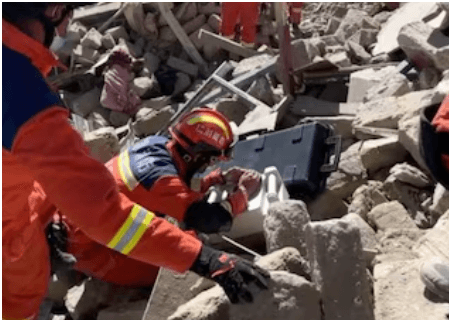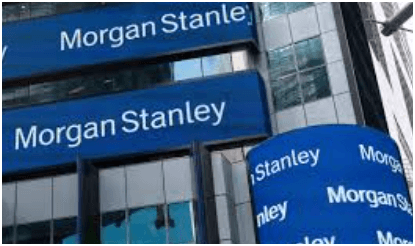
A red-eye train between LA and SF is a no brainer for California travel, so why don’t we have one?
[ad_1]
You can find overnight passenger trains in books, songs, Asia and Europe, but not on the rails between the Bay Area and Los Angeles. Not since 1983.
It’s time to give the night train another look. If the appeal of stepping aboard after dinner, relaxing and waking up to breakfast at the other end of California isn’t enough to give the idea a serious thought, there’s this:
• The in-state travel market is big. San Francisco to LA is one of the nation’s busiest flight corridors. The freeways are crowded. Amtrak, the national rail carrier, already operates six daily trains between the two metros, all leaving Oakland between 7 a.m. and 5:30 p.m. (arriving between 4:30 p.m. and 2:15 a.m.), and it plans to keep growing
• Caltrans intends to continue adding trains in California for both mobility and environmental reasons
• Amtrak plans to “add and enhance” routes nationwide in the next five years, and has money to back up the goal
• California’s north-south high-speed rail project, assuming it gets completed, doesn’t preclude night trains. Several countries that already have high-speed rail have been restoring overnight trains in Europe
“Oh, I think there would be demand,” said Marian Wattel, a travel consultant in Stockton who specializes in rail travel. “Cost would be a factor.”
The Lark
By many accounts, the best night train ever to connect LA and San Francisco was the Lark, operated by the Southern Pacific railroad on tracks along the coast. Trains left SF and LA around 9 p.m. daily, arriving at the other end about 12 hours later.
“Its most stunning car was the three-segment articulated Lark Club dining lounge,” wrote author Brian Solomon in his book, “Southern Pacific Passenger Trains.” This “elegant, sophisticated car” featured “a dining area, half-moon bar, and lounge.” It had a telephone passengers could use en route, which was innovative tech for the 1950s.

Union Station during the 93rd Annual Academy Awards in April 2021 in Los Angeles, California.
AaronP/Bauer-Griffin/GC ImagesAs the public shifted to driving and flying, the SP cut back. By the Lark’s final run in April 1968, the train’s food service had dwindled to an “automatic buffet” car stocked with vending machines, evoking the kind of vanishing train ambiance Steve Goodman elegized in his hit song “City of New Orleans” a few years later.
Today? Well, Amtrak’s schedule shows an Amtrak Thruway bus scheduled to leave San Jose at 11:45 p.m. and deliver you to Santa Barbara at 6:30 a.m., where you can catch a regional train to LA at 6:53 a.m.
I’ve traveled on Amtrak across most of the country, and even I’m reluctant to try that experience.
Turn that schedule into a through train, though, and you’d have something like the Spirit of California, the last overnight train on the route to date.
Like ordering from a secret menu
From 1981 to 1983, the Spirit of California ran from LA to Sacramento on the same route as today’s Coast Starlight, except at the opposite end of the day. It offered coaches, a cafe and sleeping cars with private rooms.
I was working at the Daily Republic newspaper in Fairfield, and rode the train a few times to visit a friend from college in SoCal. Not having to fly, drive or burn a vacation day for a weekend in LA felt clever, like ordering from a secret California travel menu.
The train was utilitarian, comfortable and handy. One night, when I was restless, I relaxed by gazing out at the Pacific Ocean lit by a bright moon.

“Train Autos-Couchettes” travel poster advertising sleeping cars and depicting a couple carrying a car-shaped bag near an auto train, illustrated by Bernard Villemot for the French National Railway Company in 1964.
Potter and Potter Auctions/Gado/Gado via Getty ImagesUnfortunately, the Spirit of California was about as visible as a secret, too. Not enough people used it. A new California governor took office in 1983 and pulled the state subsidy.
In 2022, passengers can choose among the six trains between the Bay and LA — the full-service Coast Starlight along the coast, plus five San Joaquin trains that run between Emeryville, Stockton and Bakersfield, where they connect with Thruway buses to LA. But if the state lives up to its plan, more trains are coming throughout California.
Amtrak and Caltrans respond
Amtrak’s Connect Us project, backed by $66 billion from the 2021 U.S. infrastructure bill, proposes new trains in much of the country—which is unusually expansive for Amtrak. However, the project doesn’t include a new Bay Area-LA coastal train.
“Sub-portions of the route are part of the Connect Us plan,” said Olivia Irvin, Amtrak public relations manager in Oakland. “But not the full route.”
The plan does come close. It proposes three new trains from the Bay Area to San Luis Obispo, which is the north end of an existing SoCal service from San Diego. Adding a Bay-SLO train to an SLO-LA train, to create one through train, seems like an obvious possibility.

A south-bound Metrolink train passes through San Onofre State Beach near Lower Trestles in San Clemente in August 2019.
MediaNews Group/Orange County Re/MediaNews Group via Getty ImagesAmtrak coordinates Connect Us with California’s State Rail Plan. The state plan outlines various new and expanded routes, including a new privately run SoCal-Las Vegas train, additional service on the Capitol Corridor and more. The intent is to reduce carbon-dioxide emissions and make it easier for people to use trains to get around California.
Caltrans isn’t pursuing a night train, but it’s leaving the door open.
“Although a single, overnight service between Sacramento, the Bay Area and Los Angeles has not been discussed, the state rail plan and emerging market conditions would support further analysis of this service concept,” said Will Arnold, a media relations manager for Caltrans.
Intriguingly, the state might retain overnight access to the coastal route from the 1980s. The access would be useful because the Union Pacific, the freight railroad that now owns most of the route, must allow any new passenger train on the line.
“Caltrans’ understanding is that the state retains the right to operate an overnight passenger train between Sacramento and Los Angeles on the coast route, which was secured through a Surface Transportation Board ruling” after the Spirit of California ended in 1983, Arnold said, and added that confirmation of that ruling is needed.

Amtrak train track hug the rugged California coastline near Jalama Beach, California.
George Rose/Getty ImagesUnion Pacific is agreeable to adding passenger trains on its tracks — when they “can be accomplished through mutually beneficial partnerships,” wrote a spokesperson on Union Pacific’s Inside Track website last year.
The coast line is not nearly as busy as the country’s major freight rail corridors, which would likely assist any negotiations for access.
Turnaround in Europe
David Schonbrunn, president of the Train Riders Association of California, said he knows serious private entrepreneurs, not ready to go public, who are interested in operating passenger trains in California, including on the coast route.
He opposes California’s high-speed rail project, and says it’s chasing away private ventures in California passenger rail.
A few private companies operate passenger trains in the United States. Brightline has trains in Florida and plans to build and operate the Las Vegas-SoCal electric high-speed train under the name Brightline West. Another company runs the Rocky Mountaineer luxury sight-seeing train in Colorado and Utah.
But other private ventures have failed, such as a classic sleeping-car service between Chicago and New Orleans offered a decade ago by would-be passenger-train revivalist Iowa Pacific.

Passengers board the first night train heading to Brussels before its departure on January 19, 2020 after the inauguration of the new night-train connexion from Vienna to Brussels.
ALEX HALADA/AFP via Getty ImagesDedicated overnight trains, or the equivalent of red-eye flights, are uncommon in the U.S. Amtrak has at least one, between Boston and Washington on the Northeast Corridor, although the sleeping car added to that train last year isn’t operating at present. The route has useful elements for a night train: two metros with significant traffic, far enough apart for a nocturnal schedule to make sense.
Night trains are more common in Europe.
“The oft-repeated opinion was low-cost airlines and fast day trains made them obsolete,” wrote rail journalist Kevin McKinney in the magazine Passenger Train Journal. “But then a miracle occurred. Austria’s [federal railway] OBB breathed new life into the concept.” Rail travel is gaining favor as better for the environment than flying.
Several other national railways are now participating in OBB’s network, he wrote, and “other railways have either jumped on the night-train trend, or plan to.” The newest train, all sleepers and a restaurant car, links Malmo, Sweden, with Salzburg, Austria.
Wi-Fi, bedrooms and a lounge
To succeed, a Bay-LA coastal overnight train would need sleepers, coaches, a dining car and Wi-Fi, said travel consultant Wattel. “It must be much nicer to be on the train than to drive yourself. They’d need a lounge car, something better than they have on the trains that run down the valley. Have a little thought go into it.”
Pricing would also be key. Amtrak raises ticket prices when demand is high, and the carrier is short on equipment for long-distance trains, which means first-class fares soar during peak travel times. Wattel said customers ask her about taking a train, hear the price, and then drop the idea.
The night-train ticket would “have to be like the price of a hotel room,” she said. “An upscale room, but not overboard.”

Sunset over the Pacific Ocean above the Amtrak train tracks in December 2018, at Gaviota State Beach.
George Rose/Getty ImagesThe state would have to do a lot of work before it could bring back an overnight train. Arnold, the Caltrans media manager, has a list: a market analysis, agreement with the Union Pacific, availability of equipment and so on.
Plus, money to pay for it all.
But the state rail plan declares that California, by 2040, should have a system broad enough to attract 1.3 million rail riders per day, or “three times the number of passengers boarding flights at California’s seven largest airports … [the equal] of nearly 3,000 Boeing 747 jumbo jets.”
Maybe there’s room for a 21st century Lark in that mix.
Bill Buchanan is a writer, editor and host of the radio program/podcast “Davisville” on KDRT-LP 95.7 FM in Davis.
[ad_2]
Source link






